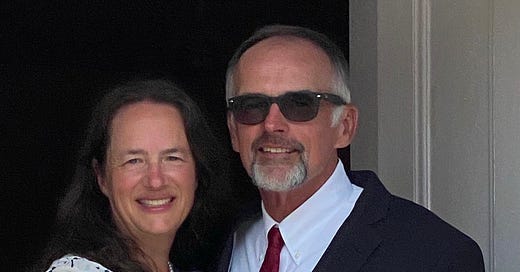
Yesterday the National Institutes of Health under the Trump administration announced a new policy that will dramatically change the way the United States funds medical research. Now, when a researcher working at a university receives a federal grant for research, that money includes funds to maintain equipment and facilities and to pay support staff that keep labs functioning. That indirect funding is built into university budgets for funding expensive research labs, and last year reached about 26% of the grant money distributed. Going forward, the administration says it will cap the permitted amount of indirect funding at 15%.
NIH is the nation’s primary agency for research in medicine, health, and behavior. NIH grants are fiercely competitive; only about 20% of applications succeed. When a researcher applies for one, their proposal is evaluated first by a panel of their scholarly peers and then, if it passes that level, an advisory council, which might ask for more information before awarding a grant. Once awarded and accepted, an NIH grant carries strict requirements for reporting and auditing, as well as record retention.
In 2023, NIH distributed about $35 billion through about 50,000 grants to over 300,000 researchers at universities, medical schools, and other research institutions. Every dollar of NIH funding generated about $2.46 in economic activity. For every $100 million of funding, research supported by NIH generates 76 patents, which produce 20% more economic value than other U.S. patents and create opportunities for about $600 million in future research and development.
As Christina Jewett and Sheryl Gay Stolberg of the New York Times explained, the authors of Project 2025 called for the cuts outlined in the new policy, claiming those cuts would “reduce federal taxpayer subsidization of leftist agendas.” Dr. David A. Baltrus of the University of Arizona told Jewett and Stolberg that the new policy is “going to destroy research universities in the short term, and I don’t know after that. They rely on the money. They budget for the money. The universities were making decisions expecting the money to be there.”
Although Baltrus works in agricultural research, focusing on keeping E. coli bacteria out of crops like sprouts and lettuce, cancer research is the top area in which NIH grants are awarded.
Anthropologist Erin Kane figured out what the new NIH policy would mean for states by looking at institutions that received more than $10 million in grants in 2024 and figuring out what percentage of their indirect costs would not be eligible for grant money under the new formula. Six schools in New York won $2.4 billion, including $953 million for indirect costs. The new indirect rate would allow only $220 million for overhead, a loss of $723 million.
States across the country will experience significant losses. Eight Florida schools received about $673 million, $231 million for indirect costs. The new indirect rate would limit that funding to $66 million, a loss of $165 million. Six schools in Ohio received a total of about $700 million; they would lose $194 million. Four schools in Missouri received a total of about $830 million; they would lose $212 million.
Lawmakers from Republican-dominated states are now acknowledging what those of us who study the federal budget have pointed out for decades: the same Republican-dominated states that complain bitterly about the government’s tax policies are also the same states that take most federal tax money. Dana Nickel of Politico reported yesterday that Republican leaders in the states claim to be enthusiastic about the cuts made by the Department of Government Efficiency but are mobilizing to make sure those cuts won’t hurt their own state programs that depend on federal money. Oklahoma governor Kevin Stitt told Nickel that governors can provide advice about what cuts will be most effective. “Instead of just across the board cutting, we thought, man, they need some help from the governors to say, ‘We can be more efficient in this area or this area, or if you allow block grants in this area, you can reduce our expenditures by 10 percent.’ And so that’s our goal.”
Yesterday, Tim Carpenter of the Kansas Reflector reported that Senator Jerry Moran (R-KS) is concerned about the Trump administration’s freeze on food distributions through the United States Agency for International Development (USAID). USAID buys about $2 billion in U.S. agricultural products a year, and farmers are already struggling with rising costs, low prices, and concern with tariffs.
Their spokespeople urge the continuation of USAID: the senior director of government affairs at the American Farm Bureau Federation said that “USAID plays a critical role in reducing hunger around the world while sourcing markets for the surplus foods America’s farmers and ranchers grow.” Moran added: “Food stability is essential to political stability, and our food aid programs help feed the hungry, bolster our national security and provide an important market for our farmers, especially when commodity prices are low.”
Meanwhile, federal employees are telling the stories of the work they’ve done for the country. Yesterday, a public letter whose author claimed to be an employee of the Federal Bureau of Investigation whose job is at risk in Trump’s purge of the agency wrote an amalgamation of the FBI agents being purged: “I am the coach of your child’s soccer team,” the letter read. “I sit next to you on occasion in religious devotion. I am a member of the PTA. With friends, you celebrated my birthday. I collected your mail and took out your trash while you were away from home. I played a round of golf with you. I am a veteran. I am the average neighbor in your community.”
But there is another side to that person, the author wrote. “I orchestrated a clandestine operation to secure the release of an allied soldier held captive by the Taliban. I prevented an ISIS terrorist from boarding a commercial aircraft. I spent 3 months listening to phone intercepts in real time to gather evidence needed to dismantle a violent drug gang. I recruited a source to provide critical intelligence on Russian military activities in Africa. I rescued a citizen being tortured to near death by members of an Outlaw Motorcycle Gang. I interceded and stopped a juvenile planning to conduct a school shooting. I spent multiple years monitoring the activities of deep cover foreign intelligence officers, leading to their arrest and deportation. I endured extensive hardship to infiltrate a global child trafficking organization. I have been shot in the line of duty.”
“[W]hen I am gone,” they wrote, “who will do the quiet work that is behind the facade of your average neighbor?”
Less publicly, Joseph Grzymkowski expressed on Facebook his pride in 38 years of service “with utmost dedication, integrity, and passion. I was not waste, fraud, and abuse,” he wrote. “Nor was I the “Deep State.... We are the faces of your Government: ordinary and diverse Americans, your friends and neighbors, working behind the scenes in the interest of the people we serve. We are not the enemy.”
Wth his statement, Grzymkowski posted a magazine clipping from 1996, when he was a Marine Analyst working in the Marine Navigation Department for the National Imagery and Mapping Agency (NIMA), located in Bethesda, Maryland—now known as the National Geospatial-Intelligence Agency (NGA) in Springfield, Virginia. That office provides maritime intelligence for navigation, international obligations, and joint military operations.
On January 6, 1996, a historic blizzard dumped snowfalls of 19 to 31 inches on the East Coast. Stranded alone in the station when his relief couldn’t get through the snow to work, Grzymkowski stayed at the radio. “I realized there were mariners who needed navigation safety messages delivered, and I wasn’t about to jeopardize the safety of life or cargo at sea simply because we were experiencing a blizzard,” he told a journalist. “One doesn’t leave a watch on a ship until properly relieved, and I felt my responsibility at the watch desk as keenly as I would have felt my responsibility for the navigation on the bridge of a ship.”
For 33 hours, he stayed at his desk and sent out navigation safety messages. “I had a job to do and I did it,” he recalled. “There were ships at sea relying on me, and I wasn’t going to let them down. It’s nothing that any other member of this department wouldn’t do.”
—
Notes:
https://grants.nih.gov/grants-process
https://crsreports.congress.gov/product/pdf/R/R43341/45
https://report.nih.gov/nihdatabook/report/20
https://www.nih.gov/about-nih/what-we-do/budget
https://www.unitedformedicalresearch.org/nih-in-your-state/alabama
https://www.nytimes.com/2025/02/07/us/politics/medical-research-funding-cuts-university-budgets.html
https://www.washingtonpost.com/politics/2025/02/06/trump-usaid-money-american-farms/
https://www.politico.com/news/2025/02/07/republican-state-doge-budget-013596
https://docs.google.com/document/d/12HuhGA67_QPIibLa6nB32BtepQR3zQE_DvDTDGrZ5dU/edit
Grzymkowski article is from a 5th Anniversary Special Edition (1996–2001) of NIMA's Edge magazine, an authorized, internal information publication published for the National Imagery and Mapping Agency personnel and its customers.
https://msi.nga.mil/
Bluesky:
dianamonkey.bsky.social/post/3lhocfav66s2p
X:










Sometimes it just hits me, Heather, how much of your big heart you put behind that brilliant mind of yours when you write your letters. Tonight I simply want to thank you for the compassion and humanity which undergirds all that you do. Just sayin'........
I know a government employee who70 years ago was asked to find a way to be sure that then-new pre-stressed concrete was really solid without having to crack it open. He did. That was the invention that made pre-stressed concrete construction possible. Had he been doing it in private industry, his patent for the process would have been worth billions in licensing. But since he worked for the government, it was free to anyone who wanted to use it. He once said of it, "If I'd been in private industry, I'd be rich, except for the fact if I had been in private industry, no one would have ever asked me the question."
That government employee was my father. The next time you go driving on a pre-stressed concrete freeway overpass and never worry about whether it might crumble out from under you, thank him.